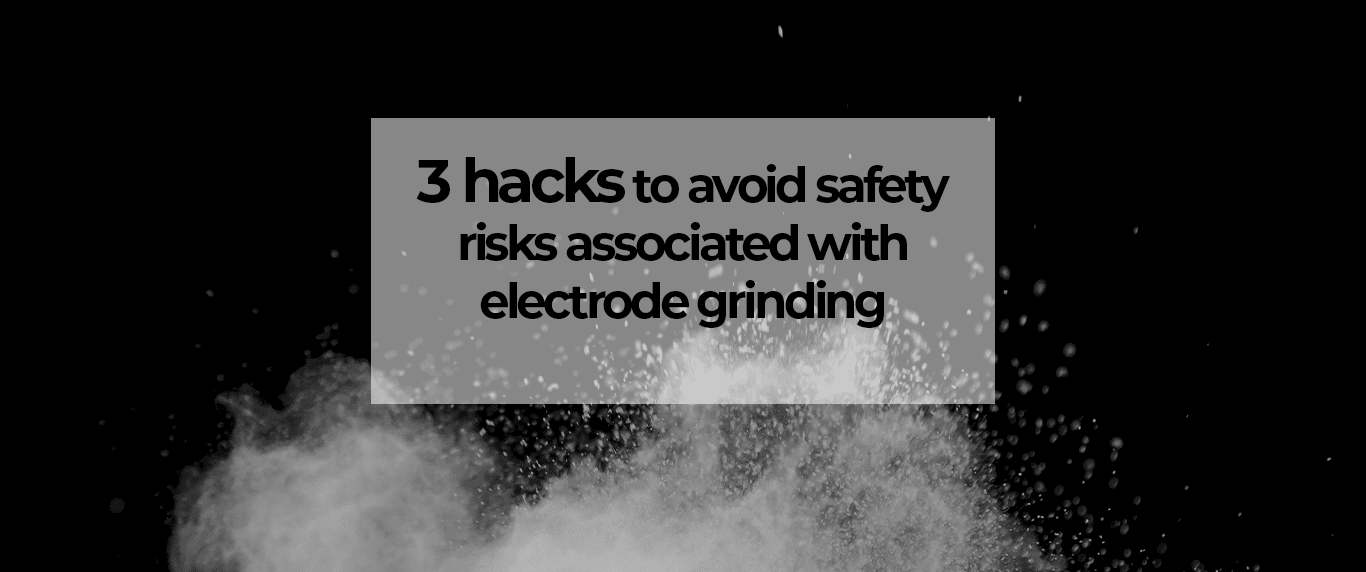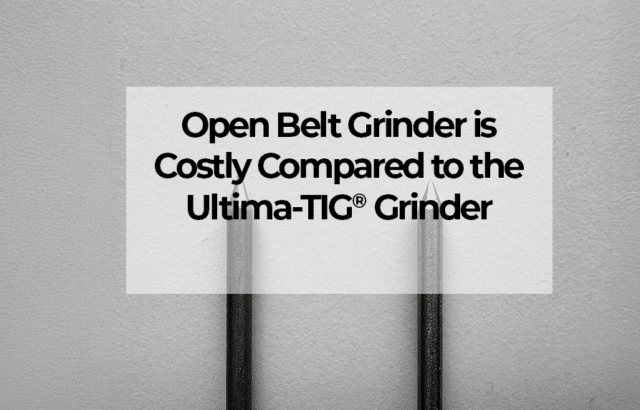As experienced welders, you’re familiar with the complexities of the craft and the materials you work with, including Tungsten electrodes. However, a less discussed but critical aspect is the health risks associated with grinding these electrodes. While the hazards of welding fumes are well known, the dangers posed by Tungsten dust particles during the grinding process are often underestimated. This article addresses these risks and offers practical solutions to ensure your safety and maintain the quality of your work.
Understanding the risks of Tungsten electrode grinding
Grinding Tungsten electrodes is a routine task, but it exposes you to a spectrum of dust particles, ranging from 10 µm to 0.01 µm. The most insidious are nanoparticles smaller than 0.1 µm. These particles are particularly hazardous because, due to their minuscule size and shape, they cannot be effectively excreted by the body. Instead, they accumulate, potentially causing long-term health issues.
Hack 1: Select the appropriate Tungsten electrode
Even though you are experienced, choosing the right Tungsten electrode is still a key factor in minimizing risks and achieving high-quality welds. Here’s a quick refresher:
- Pure Tungsten: Best for AC welding applications, particularly with aluminium and magnesium.
- Ceriated Tungsten: Ideal for low amperage applications, often used in welding unalloyed and high-alloy steels.
- Lanthanated Tungsten: Suited for high amperage welding, providing excellent durability and arc stability.
It is crucial to avoid electrodes containing thorium due to their health hazards. Thoriated Tungsten electrodes can release radioactive thorium particles during grinding, posing severe risks. However, even Tungsten electrodes without thorium are not entirely risk-free. All types of Tungsten electrodes can release harmful dust particles, necessitating stringent safety measures.
Hack 2: Properly prepare the Tungsten electrode
Angle of the electrode:
Proper electrode preparation is non-negotiable to guarantee high quality weld conditions. Grind the electrode to a precise point to ensure a stable and focused arc. Maintain a uniform / constant angle, tailored to your specific welding application. This step is critical for both performance and safety.
In addition to grinding to a point, truncating the tip of the Tungsten electrode can enhance arc stability, especially for high-precision applications. To truncate the tip, grind it to a point as usual and then remove the very tip to create a small flat spot. The diameter of the truncated flat should be approximately 0.25 to 0.5 mm for most applications. This helps to reduce the risk of the electrode splitting and provides a more stable arc. Read more about the benefits of truncating the tip here.
Are you interested in 5 pro tips to Tungsten grinding for precision welding, please take a look at our other blog post: https://inelco-grinders.com/5-pro-tips-for-maintaining-top-notch-tungsten-grinding-quality/
Wet grinding of the Tungsten electrode:
Wet grinding can offer significant benefits for preparing Tungsten electrodes. The combination of liquid cooling and a high grinding speed of the diamond disc results in a polished and even surface on the Tungsten electrode. Wet grinding not only shortens the grinding time but also prevents overheating and potential damage to the electrode. This cooling process ensures that the electrode maintains its structural integrity, leading to more consistent and reliable welding performance. This leads to the next hack, because in order to prepare the electrode properly, it is essentiel to use the correct equipment.
Hack 3: Use a precision grinder with an enclosed chamber
One of the most effective ways to mitigate the risks associated with Tungsten dust is to use a precision grinder with an enclosed grinding chamber. Traditional open belt grinders allow dust particles, including harmful nanoparticles, to disperse into the air, posing a significant health risk.
Studies have shown a dramatic increase in airborne nanoparticles when grinding with an open belt grinder. Measurements taken just 40 cm from such a grinder reveal a substantial rise in nanoparticle concentration during the grinding process. These particles can easily be inhaled and accumulate in your lungs, leading to serious respiratory conditions.
The Ultima-TIG grinder, with its enclosed grinding chamber, offers a safer alternative. It significantly reduces the emission of dangerous dust particles, effectively protecting you from occupational exposure. By using this type of grinder, the risk of inhaling hazardous nanoparticles is almost entirely eliminated, ensuring a safer working environment.
In addition, using a dedicated grinding wheel specifically for Tungsten electrodes is essential. This practice helps maintain cleanliness, prevents contamination, and ensures consistent grinding results.
Consequently, the Danish “BFA Industri”’s guidelines of work environment in the welding industry now lists these risks associated with Tungsten grinding. In these guidelines, the Tungsten grinders by Inelco Grinders are included to demonstrate our grinders as the industry standard to ensure proper precision grinding of Tungsten electrodes. See the Danish guidelines here.
Conclusion
Even as experienced welders, it’s vital to acknowledge and address the less obvious risks in your workflow, such as the dangers associated with grinding Tungsten electrodes. By selecting the appropriate Tungsten electrode, preparing it properly, and employing a precision grinder with an enclosed chamber, you can safeguard your health while maintaining the highest standards in your welding work.
Prioritize your safety by investing in tools like the Ultima-TIG grinder, which effectively minimizes exposure to dangerous nanoparticles. By doing so, you can continue to excel in your craft while protecting your long-term health.





